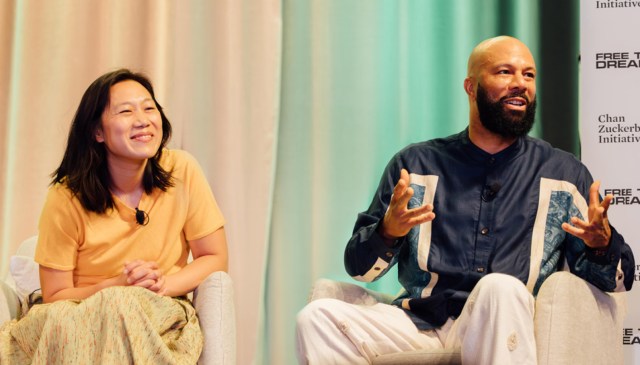May 17, 2021 · 6 min read
The 74: When Teachers Succeed, Students Do, Too.
How to Support Educators After An Unprecedented Year

This piece was published in The 74 on May 17, 2021.
As more schools reopen, educators across the United States are having long-awaited in-person reunions with their students. They do so after supporting their students through more than a year of concurrent traumas, from the physical and mental health effects of the pandemic to the continued impact of racism and racial violence, a weight borne disproportionately by Black and brown students. As always, teachers have heroically worked to help students cope with the disruptions of daily life, often putting their own personal and professional concerns aside to care for others.
After helping their students navigate the ups-and-downs of this past year, teachers are at a very real risk of burnout — a risk that not only threatens the well-being of our students, but of the entire education system. They deserve the same level of support that they have provided to their students, and it’s up to all of us to prioritize their well-being.
We all know the impact that a good teacher can have on a student’s life, and on a family’s trajectory for generations. I’ve seen this in my own life: Because a local teacher in Taiwan decided to adopt my father, he was able to set off on a course to college. The consequences of that decision continue to reverberate, decades later, in the life that I and my three young children have the privilege to live.
But increasingly, teachers who could make a difference in students’ lives are being pushed out of the profession. According to a recent RAND report, nearly half of the public school teachers who voluntarily stopped teaching after March 2020 did so because of the pressures of COVID-19, from the unfamiliar remote environment to the longer hours that remote learning demands. Stress was the most commonly cited reason for their departure. However, there is one hopeful sign: we know that many of those teachers hope to return to their students — if we are able to better support them.
District and school leaders have an important opportunity to start making that happen right now. They can recognize that when teachers succeed, their students do, too — and help teachers by devoting resources to create an environment of safety and connection, and by investing in support systems that are based on the science behind relationships, resilience and readiness for learning. By doing so, school and district leaders can help teachers reengage with what they loved about the profession in the first place, and revitalize their relationships with their students.
Failing to do that, and focusing only on issues of unfinished learning, risks making the problem worse for teachers and students alike. With that mindset, teachers will enter the classroom already feeling behind and burdened by the full weight of delivering instruction they’re not supported to deliver. If teachers start the year feeling overwhelmed, that feeling will quickly spread to their students.
How leaders choose to respond will have repercussions that will be felt far beyond this academic year. It will affect whether a generation of teachers and students, fresh off one of the most traumatic years of their lives, will feel supported, or stymied, by our educational system.
To start, school and district leaders can:
- Offer teachers professional development to help them connect with their students: Fannie C. Williams Charter School in New Orleans is an example of a school that actively prioritizes professional development for its instructors, with the help of the social entrepreneurship venture Black Teacher Collaborative. By providing spaces for Black teachers to reflect on their racial identity, the collaborative empowers these educators with new knowledge and skills so they can better support Black students.
- Use advances in the science behind relationships as the foundation of a healthy and rigorous learning environment: An example of this in practice is in Van Ness Elementary in Washington, D.C., where teachers prioritize building deep relationships with one another, their students and the wider community. They aim to meet their communities where they are — and use everything from storytelling to home visits to do so.
- Create intentional settings for staff and educators to reconnect and heal: Valor Collegiate Academies in Nashville understands that trust and vulnerability are key to anchoring strong relationships between staff and educators. That is why they use lessons from the science behind relationships to organize a weekly social-emotional exercise known as “Adult Circle,” where teachers share the victories and challenges happening in their classrooms, and support one another.
Next, education leaders can invest in innovative ways to help teachers build relationships with their students. Technology isn’t a magic wand that can make our problems disappear, but if this past year has shown us anything, it is that technology can be an important tool for connecting teachers and students. Along, a digital reflection tool that the Chan Zuckerberg Initiative and its partners at Gradient Learning, is a good example. Based on the science of relationships, Along allows teachers to get to know their students while helping students build lifelong skills in areas like organization, motivation and stress management. And because it provides a dedicated space for teachers to communicate individually with each student, it has made it easier for them to tailor their teaching to each child’s holistic needs.
Finally, by listening to the needs of their community, leaders can prioritize and adapt strategies to improve teacher and student well-being with insights from those who know it best — teachers and students themselves. They can do this by conducting more robust school climate surveys that look at how well a school is supporting teachers’ and students’ sense of belonging and connection. Here, too, educators’ and students’ outcomes are inherently tied: If adults lack belonging and connection, their students will feel the same way, which will impact their readiness for learning and development. After this traumatic pandemic year, school leaders have an opportunity to start measuring success through the health of the learning environments they create for both teachers and students.
Every May, during Teacher Appreciation Week, the country recognizes how important teachers are. This year, the most challenging academic year in modern history, we must go beyond appreciating teachers in words and commit to supporting their well-being with actions and resources. Nothing less than the health of a whole generation of teachers — and generations of students — is at stake.
###
Sandra Liu Huang leads the Education Initiative, product and design at the Chan Zuckerberg Initiative, focused on ensuring every student gets an education that meets their needs and supports every aspect of their development.





